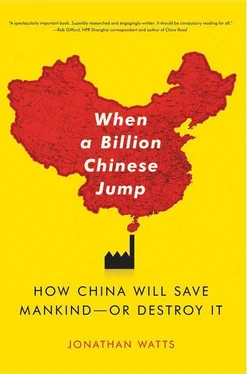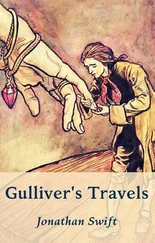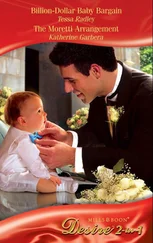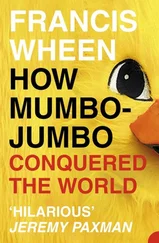“They used the trick of wine, women, and song to make the journalists write that this was Shangri-La, even though there was no such place. I taught them this strategy,” he boasted proudly.
It got messy after 1997, when Zhongdian—which neither Hilton nor even Rock ever visited—unilaterally renamed itself Xianggelila, Shangri-La. The Xinhua News Agency wrote of “chaotic” battles between rival paradises. Xuan was inundated with demands and threats from mayors and governors, who wanted him to declare Zhongdian a fake.
“I was a little scared,” he recalled. “Because I did not know the real Shangri-La. I had just read Hilton’s book and watched the film.”
With the contest starting to turn nasty, the central government stepped in. In December 2001, the State Council, the highest decision-making body in the government, declared the matter settled in a red-bannered document that ruled Zhongdian is Shangri-La.
Xuan laughed. “The stupid government changed the name into Shangri-La, even though it is only an ideal. It is not strictly speaking a village, or a county or even a place, but although it is not one hundred percent true, the renaming is still a good thing because it feeds people’s ideals and dreams.”
When I asked about the environmental impact, Xuan was less confident about the benefits of the renaming. He claimed logging was halted after Zhongdian became Shangri-La, but the water and air quality have deteriorated because of the influx of people. 9The solution, he believed, was to raise the quality of the visitors. “If we can find such a place where many cultures and traditions can live harmoniously together, that should be enough. Why should we worry about water and air pollution?”
Such an attitude, I was beginning to realize, was a major challenge to conservation in China. In mainstream thought, Utopia was not about nature, it was about people.
Xuan was proud of his role. The benefits of Shangri-Lazation could be seen, he said, in the huge crowds that crushed through the city streets. 10Business did well but he acknowledged that the town had become a less pleasant place to live. “It is so crowded and there are so many bars and cafes with loudspeakers playing music that I cannot sleep. So I made my old home into a hotel and moved my bed into the countryside.”
Although the idea of a lost paradise echoes the biblical story of Eden, it’s odd that the location of Shangri-La was so heavily influenced by three Christians: Rock, Hilton, and Xuan. Commentaries in the People’s Daily, the Communist Party mouthpiece, routinely castigate Westerners for their dreamy view of Tibet. 11But not only Westerners look to the Himalayas for ways of life that have been lost elsewhere. Lost Horizon became popular in the West during one of the most disruptive and frightening phases of industrialization. Even though he was writing on the other side of the world about a place he had never been, Hilton may have stumbled onto a yearning that is just as keenly felt in modern China as it was among the Western audience he wrote the novel for more than seventy years ago. Zhongdian initially adopted the name Shangri-La to attract wealthy foreigners, but most of the tourists in northwest Yunnan were Han Chinese. They came in search of a pristine environment and culture—an alternative to their homes in the modern megalopolises of Shanghai, Guangzhou, and Beijing. For some, it was a revelation. The Beijing-based activist Hu Jia told me he was inspired by the natural scenery and religious beliefs he found in these forests and mountains. 12Others leave disappointed. “I spent six months meditating in a Tibetan monastery, but all I discovered was that the monks are as corrupt and lecherous as everybody else,” lamented another Beijinger.
China had its own images of a lost paradise. The closest to Shangri-La is probably the myth of the Land of Peach Blossom. Set in the Eastern Jin dynasty (ad 317–420), this is the tale of a humble fisherman who wanders through a narrow cave to discover a hidden mountain-ringed Utopia. The inhabitants are descendants of war refugees from the Qin dynasty, who had lived undisturbed for hundreds of years in perfect harmony with each other and nature. The fisherman returns home to tell the story, but he is never again able to find the idyllic valley. The Land of Peach Blossom has become an ideal of beauty. Images of this land are painted in gorgeous colors on the Long Corridor of the Summer Palace in Beijing. It is also the inspiration for China’s most innovative and influential landscape gardener, Yu Kongjian, a young professor from Peking University who calls for his countrymen to seek the utility of nature, rather than repeating the mistakes made by emperors over thousands of years in trying to re-create its beauty artificially in decorative gardens. 13
Ancient Chinese art and literature contains numerous other paeans to nature. As early as the Eastern Zhou period (700–256 BC), there was a saying: “People who are of ruling quality but are not able to respectfully preserve the forests, rivers, and marshes are not fit to become rulers.” 14
But more dominant philosophies have tended to stress the importance of ordering humanity and taming the wild. Under Confucianism, humanity’s relationship was filial—man should honor nature as he respects a parent or a ruler. In this hierarchy, even the emperor was subservient and obliged to pay homage to the natural order at the temples of heaven, sun, moon, and earth. The fourth-century BC Confucian philosopher Mencius equated moral advancement with a better understanding of nature. But most Confucians emphasized society rather than the environment. Legalism, also known as Realism, took an even more hard-boiled approach. Its advocates believed the primary concern of a leader was to maximize the power of the state. The environment, like everything else, was sacrificed for this goal. Buddhism introduced the idea of reincarnation and respect for all living creatures. There is no duality between man and nature—they are one. But many believers also revere holy lakes and mountains, particularly in Tibet, where Buddhism is mixed with ancient Dongba traditions.
Taoists took an altogether more relaxed and anarchic approach that dismissed mankind’s attempts to impose order on all-encompassing, endlessly mutable cosmos. The Tao is what changes rather than what man thinks it should be. Believers aim to get as close as possible to the natural world, to balance with it rather than to worship or rearrange it. Their closest term for nature was ziran , which conveys a sense of “spontaneous unfurling in which the earth is seen as a boundless generative organism”—a concept that has come to appeal in the modern age to the “deep green” eco-movement. 15Its nonmaterialist outlook was best illustrated by the story of the Taoist sage Zhuangzi, who was dozing in the shade of a gnarled tree when a rival took the opportunity to pour scorn on his philosophy.
“Your teachings are as useless as this tree. None of its branches will produce a single straight plank. Nothing can be carved from its knotted grain,” sneered the worldly critic.
Zhuangzi giggled. “Useless? Oh yes. I certainly hope so. You could plant this tree in a wasteland and still rest in its shadow, still eat its fruit. No axe will ever be sharpened to chop its trunk, no saw will ever trim its branches. If your teachings are more useful, you are the one who should worry.” 16
In ancient literature, Taoists envisaged a lost Utopia where everything had been in harmony. According to the Book of the Prince of Huainan, this cornucopia was made possible by the wisdom of the Three Emperors, who—according to myth—ruled 5,000 years ago at the dawn of Chinese civilization. 17They were depicted as masters of restraint:
Читать дальше










